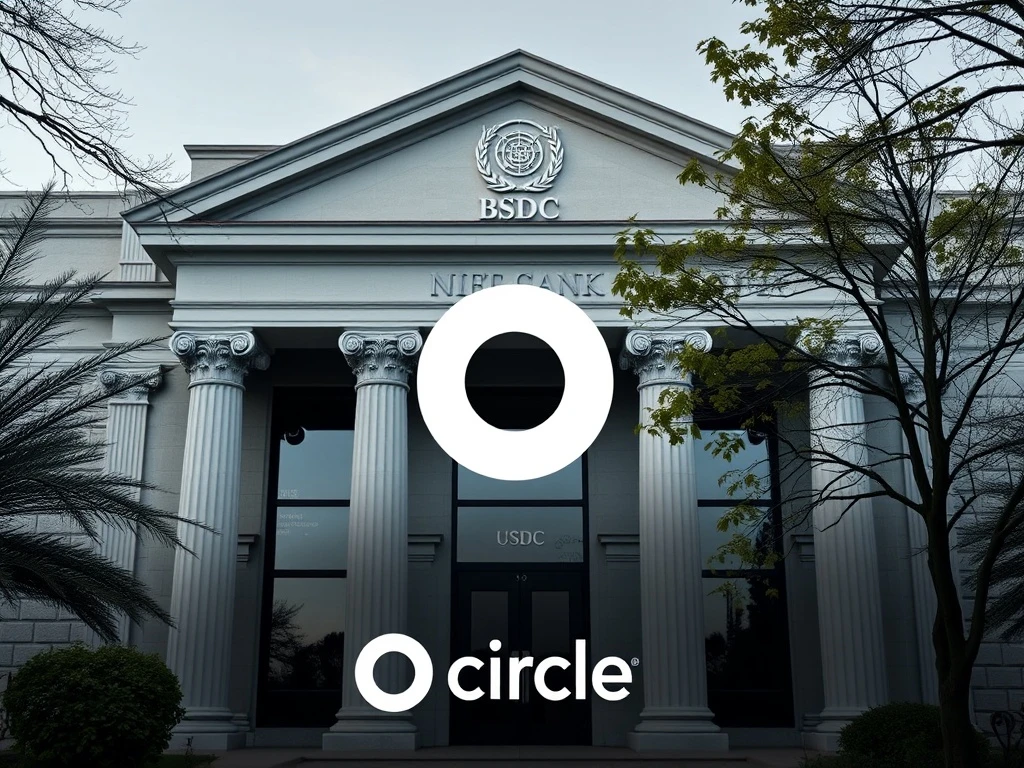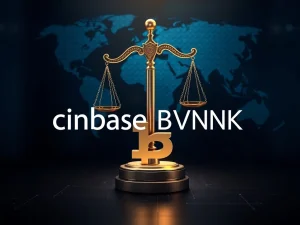Circle’s Strategic Leap: Applying for US Bank Charter for USDC Reserve

Major news from the stablecoin world! Circle, the issuer behind the popular USDC stablecoin, is making a significant move that could reshape the landscape of digital currency management and boost stablecoin regulation in the United States. The company has officially applied for a US national trust bank charter, aiming to bring its USDC operations under federal oversight.
Why is Circle Seeking a Bank Charter?
Circle has submitted an application to the US Office of the Comptroller of the Currency (OCC) to establish a national trust bank. This entity, potentially named Circle’s First National Digital Currency Bank, would primarily manage the company’s USDC reserve on behalf of its US issuer. This move is a proactive step to align with evolving US regulatory frameworks for dollar-denominated payment stablecoins.
A national trust bank charter offers several advantages for a digital currency firm:
- Federal Oversight: Operating under the OCC provides a single, national regulator, potentially streamlining operations compared to navigating state-by-state money transmitter licenses.
- Reserve Management: The proposed bank would oversee the critical reserves backing USDC, aiming to enhance transparency and stability.
- Custody Services: The bank could offer digital asset custody services to institutional clients, expanding Circle’s business offerings.
- Regulatory Alignment: Circle believes this charter will help it meet potential requirements under proposed legislation like the GENIUS Act, which aims to create a clearer path for stablecoin issuers.
It’s important to note that national trust banks have limitations. They cannot accept consumer cash deposits or issue loans like traditional commercial banks. Their focus is on trust activities, such as asset custody and management.
What Does This Mean for USDC and the Market?
Circle’s application is a strong signal regarding the company’s commitment to operating within established financial regulatory structures. For USDC holders and the broader market, this could instill greater confidence in the stablecoin’s stability and compliance. Increased regulatory clarity is often seen as a positive factor for wider adoption by institutions and traditional businesses.
The application process involves a 30-day public comment period, followed by the OCC‘s review, which typically takes around 120 days.
Is Circle Alone in This Pursuit?
Circle is not the only player in the crypto space eyeing a national bank charter. Reports suggest that several other firms, including the digital asset arm of financial giant Fidelity, are also considering or pursuing similar applications with the OCC. This indicates a broader trend among established crypto companies seeking federal regulatory clarity and legitimacy.
This follows the precedent set by Anchorage Digital Bank, which received the first national bank charter for a crypto firm from the OCC in January 2021.
Looking Ahead: The Future of Stablecoin Regulation
Circle’s move highlights the growing importance of stablecoin regulation in the United States. As stablecoins like USDC become more integrated into financial systems, regulators are increasingly focused on ensuring their stability, transparency, and compliance with anti-money laundering and other financial laws. The pursuit of bank charters by crypto firms is a direct response to this evolving regulatory landscape and a step towards mainstream acceptance.
Summary
Circle’s application for a US national trust bank charter is a pivotal moment for the company and the stablecoin market. By seeking federal oversight from the OCC, Circle aims to strengthen its USDC infrastructure, enhance regulatory compliance, and potentially expand its services. This action, alongside similar considerations by other firms, underscores the industry’s drive towards greater legitimacy and the increasing focus on stablecoin regulation in the United States.







